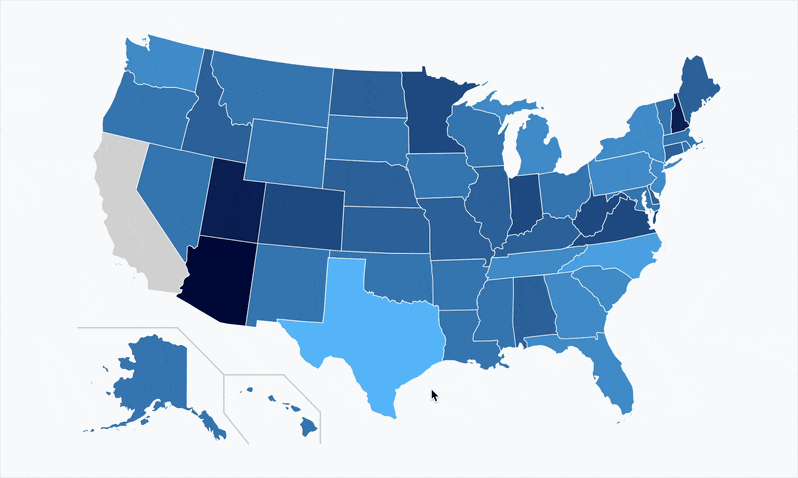Dual enrollment has become increasingly popular over the past two decades, with more students choosing it as a simpler and more accessible way to earn college credits compared to traditional Advanced Placement courses.
In fall 2023, 1.5 million students aged 17 or younger enrolled in postsecondary institutions, accounting for 10 percent of total undergraduate enrollment. These young students are the fastest-growing undergraduate student segment in the US. In fact, from fall 2018 to fall 2023, they were the only segment that saw an increase in undergraduate enrollment. Enrollment of students under 18 grew 23 percent from fall 2018 to fall 2023. Enrollment grew 87 percent from fall 2011 to fall 2021, compared to a total undergraduate enrollment decline of 15 percent.
Note: While data from the National Student Clearinghouse and IPEDS do not specifically identify these young students as dual enrollment students, for purposes of this blog, students under the age of 18 serve as a proxy for dual-enrolled students.
The National Student Clearinghouse reports student age data for each fall term reporting period. IPEDS requires student age data in odd years.

Dual Enrollment at Community Colleges is Rising Fast
Growth in dual enrollment students has been most pronounced at community colleges. In fall 2023, students aged 17 or under accounted for 19.3 percent of enrollment at community colleges, up from 13.4 percent in fall 2018.
 A report from the Community College Research Center (CCRC) states:
A report from the Community College Research Center (CCRC) states:
- Nationally, 82% of high school students attend a school that offers DE courses.
- About one-third of high school students have taken at least one DE course by graduation.
- More than 1.5 million students annually enroll in DE courses, with more than a million of them at community colleges. From 2011 to 2021, the number of students taking DE nearly doubled, and it continues to grow.
- About 70% of DE courses are offered through community colleges.
- High school students account for one in five community college enrollments.
New Models Are Emerging for Revenue Generation from Dual Enrollment Students
Dual enrollment students are an important source of enrollment growth at community colleges, but financial implications vary among institutions. DE enrollees are large in number, but their tuition is usually much lower than that of full-time enrollees. But there is opportunity for community colleges to leverage dual enrollment to create a more sustainable and profitable economic situation. In February 2023, the CCRC published an analysis detailing the ways schools might follow a new model: economies of scale, student success, and yield surplus. An excerpt from a 2023 Inside Higher Ed article with insight on the CCRC’s analysis follows:
“It notes that increases in the number of dual-enrollment students cause the average cost of implementing these programs to drop. The paper also highlights that dual-enrollment students tend to be high achieving, do well in their classes and are retained at relatively high rates, so in states with performance-based funding formulas that include dual-enrollment students, these students can bring in extra state funding. Some states also provide specific grants and subsidies for dual enrollment. Lastly, the paper suggests that if these students are encouraged to enroll at the community college post–high school, they’ll bring in future tuition revenue and perhaps performance-based funding as well.”
The CCRC also has several working papers related to rethinking approaches to dual enrollment.
In recent years, many states have embraced new performance-based funding models for community colleges, and the results are quite promising. Most recently, Texas, California, Oregon, Alabama, and Kentucky have switched over to this model, and earlier this month, Texas reported a hopeful first year since it implemented the new model in 2023. Additionally, research shows that the focus on underserved student populations is sharpening in several states, and more and more institutions are using the DEEP model (Dual Enrollment Equity Pathways) to create a more equitable route for underserved students. Other institutions are using variations thereof, like the University of Utah, and The Florida College Access Network just published “The Case For Dual Enrollment.”
More students are dually enrolled than ever before, and higher education appears to be rising to the occasion by focusing on a way forward that incorporates strategies for positive outcomes for students, educators, institutions, and the workforce.





